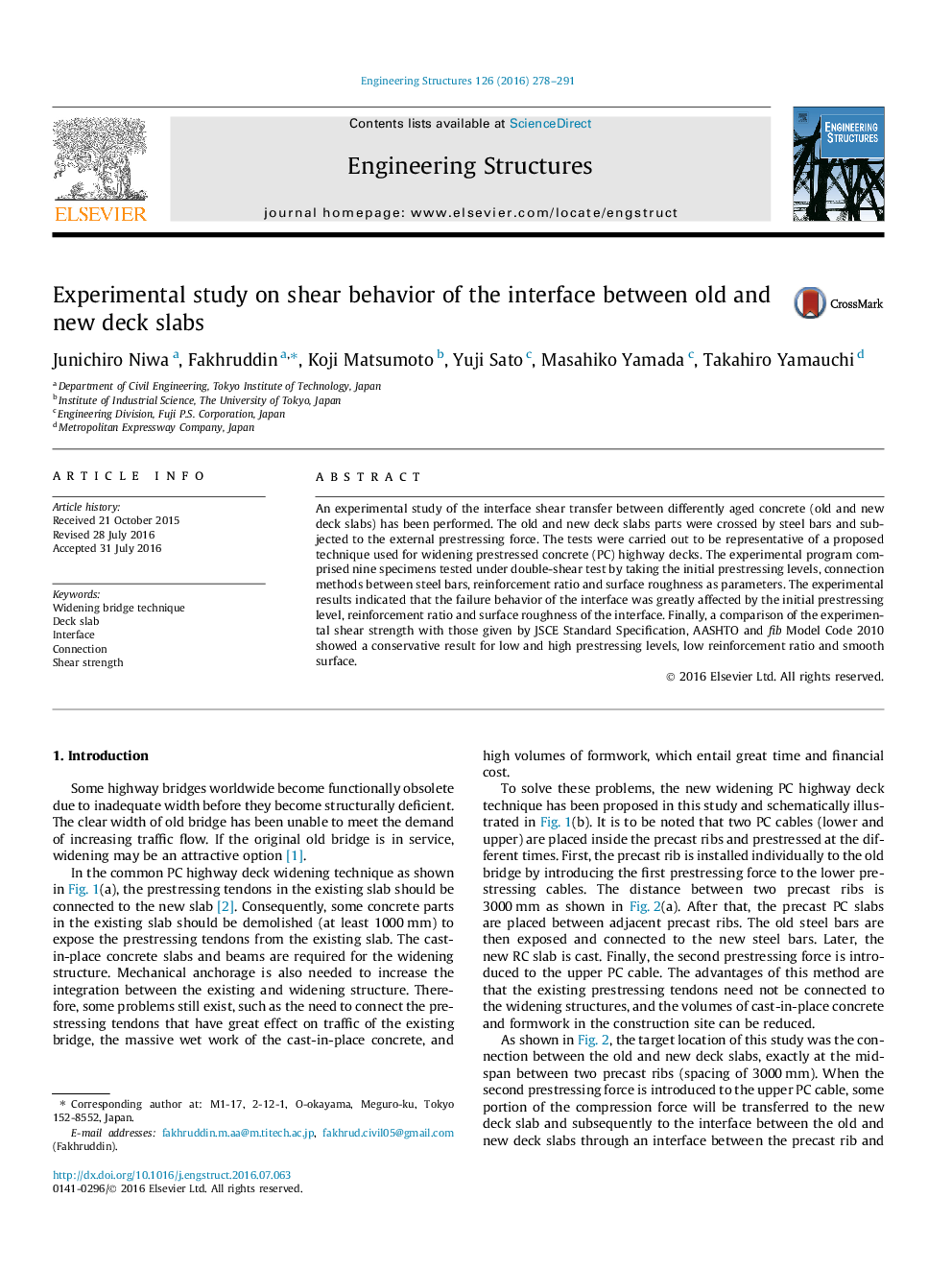| Article ID | Journal | Published Year | Pages | File Type |
|---|---|---|---|---|
| 4920767 | Engineering Structures | 2016 | 14 Pages |
Abstract
An experimental study of the interface shear transfer between differently aged concrete (old and new deck slabs) has been performed. The old and new deck slabs parts were crossed by steel bars and subjected to the external prestressing force. The tests were carried out to be representative of a proposed technique used for widening prestressed concrete (PC) highway decks. The experimental program comprised nine specimens tested under double-shear test by taking the initial prestressing levels, connection methods between steel bars, reinforcement ratio and surface roughness as parameters. The experimental results indicated that the failure behavior of the interface was greatly affected by the initial prestressing level, reinforcement ratio and surface roughness of the interface. Finally, a comparison of the experimental shear strength with those given by JSCE Standard Specification, AASHTO and fib Model Code 2010 showed a conservative result for low and high prestressing levels, low reinforcement ratio and smooth surface.
Related Topics
Physical Sciences and Engineering
Earth and Planetary Sciences
Geotechnical Engineering and Engineering Geology
Authors
Junichiro Niwa, Fakhruddin Fakhruddin, Koji Matsumoto, Yuji Sato, Masahiko Yamada, Takahiro Yamauchi,
